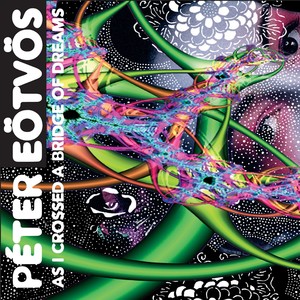
As I Crossed a Bridge of Dreams
- 流派:Classical 古典
- 语种:纯音乐
- 发行时间:2015-05-20
- 唱片公司:BMC Records
- 类型:录音室专辑
- 歌曲
- 时长
简介
Music from words – words on music As a young man I worked as a composer in several Budapest theatres, with marvellous actors. The way that, repeating it over in rehearsal, they formed the rhythm of the text, the “melody” of the spoken text, to me sounded like music. Their voices spoke like instruments. The spoken text had all the prerequisites of music: it had melody, rhythm, tempo, tone colour, character. Thirty years later I returned to my abiding dream: after the premiere in 1998 of my first opera Three Sisters, in which every character sang, I began to compose a “speech opera”. Thus came into being in 1998–99 As I Crossed a Bridge of Dreams, which I termed “sound theatre”. Although the four actors, two instrumental soloists and the orchestra all play on the stage, it is the sound which creates the spectacle in the audience’s imagination. At the moments of remembrance three clarinets sound from three points in the space, as if to enclose the listener in a sweeping circle. The sound world of dreams is perhaps the most fertile area for the expression of this, because in dreams we see things, and hear sounds, which are “not there”, which are produced by our imagination. In dreams sounds are up close to us, right inside our ears. I can create this sound in any space, if I place the microphones close up to the instruments, or the actor’s mouth. Of especial significance is quiet speech, whispering, because it is mysterious and dreamlike. An opera singer creates song and the text that goes with it simultaneously. In this piece, I have separated the two: the actress always recites in prose, then when she reaches a poem and becomes “song”, she continues to recite the text and an alto trombone plays the “melody” for it. The reciting voice portrays the poet Sarashina. Lady Sarashina, this modest, dreaming, extremely cultured modern woman, was born exactly one thousand years ago, and as a lady-in-waiting of the Japanese emperor her job was to chat in the antechamber with diplomats. She spoke to the diplomats in verse, and they, in accordance with the custom of the time, had to respond in verse. I find Sarashina modern because the themes of her diary texts, her comments on events, her perceptive observations, her lack of a relationship, despite her work, all depict the portrait of a woman whose every word, whose world of feeling, we still understand today, even when she takes refuge from ordinary reality in dreams and fantasy stories. This “speech opera” is a world of shadows and echoes. Two instruments are related to Sarashina: an alto trombone, as Sarashina’s “alter ego”, which carries the melody, the “emotions”, and a contrabass trombone, which as a shadow of the alto trombone leads the story into the depths, into space, into the past. The wind instrument heard in the third scene, the sousaphone, embodies the Moon, to whom Sarashina speaks. The Moon, panting wearily, ascends the hill and slowly wanders from east to west. The three “dream-sounds” sometimes embody concrete personages (the mother, the sister, the priest, the “gentleman”) but are mostly fantasy figures (for instance, the governor’s daughter reincarnated in the form of a cat), and we hear the sound of Sarashina’s thoughts from every side at once. A special role is played here by Time. Since thoughts appear earlier than they are spoken, and after the spoken word they resound in the consciousness, we constantly hear three time-planes: an “ante-sound”, the present time, and reverberation. Péter Eötvös







![EÖTVÖS, P.: Tri sestry (Three Sisters) [Opera] [Chenez, David DQ Lee, Egorov, Frankfurt Opera and Museum Orchestra, D.R. Davies, N. Petersen]](http://y.gtimg.cn/music/photo_new/T002R90x90M000002aJye10E0u33.jpg?max_age=2592000)